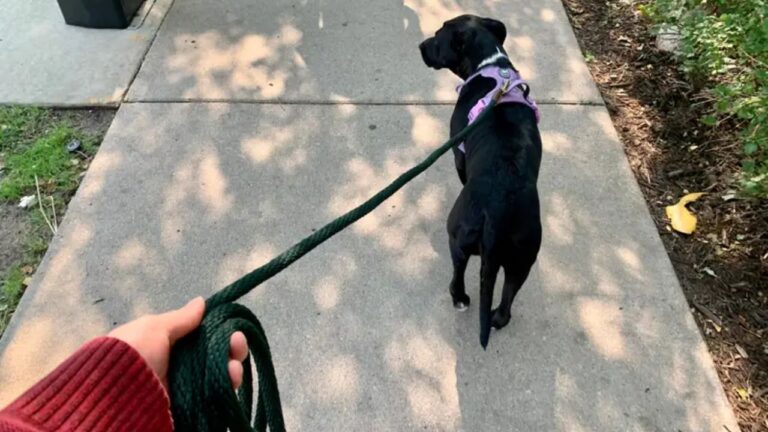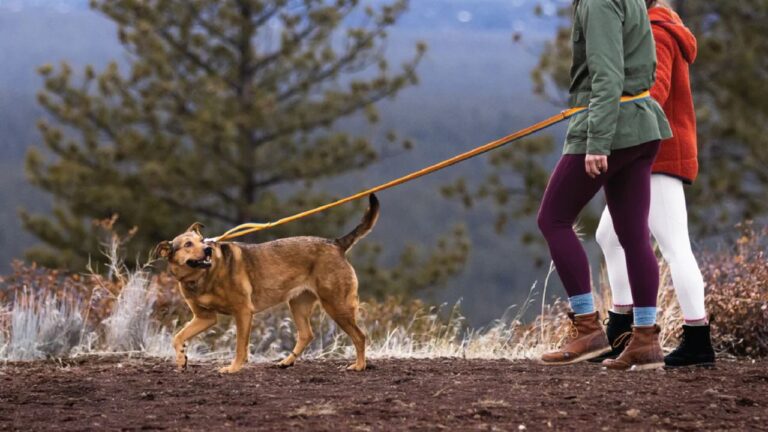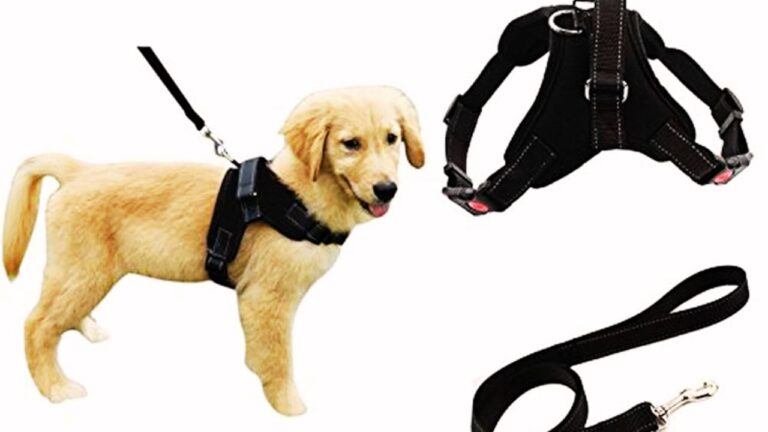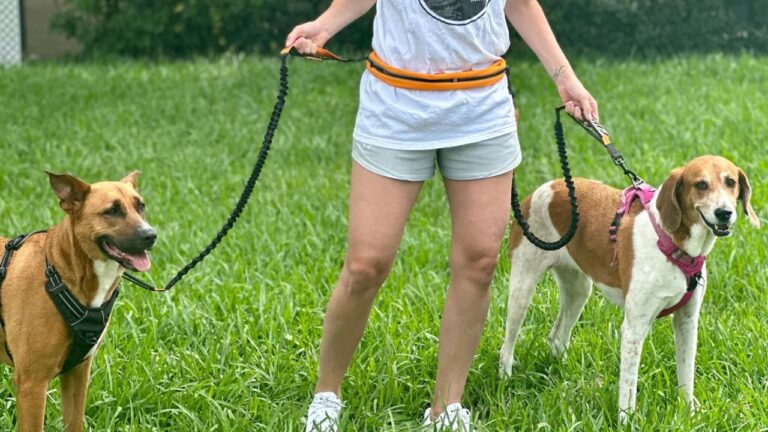| Summary: A wireless dog fence Tractor Supply provides a convenient, cost-effective pet containment solution. It uses radio signals to create an invisible boundary, preventing dogs from wandering. With adjustable settings, waterproof collars, and easy setup, it’s ideal for various yard sizes. Proper training ensures safe, effective boundary enforcement. |
A wireless dog fence is an advanced pet containment system designed to provide pet owners with a safe and effective way to keep their dogs within designated boundaries. Unlike traditional physical fences, a wireless dog fence uses radio signals or GPS technology to create an invisible boundary, preventing dogs from wandering off.
This system is particularly beneficial for those who want to maintain the aesthetic appeal of their yard while ensuring their pet’s safety. Check out the Top collars for Border Collies to find durable, stylish, and comfortable options for your active dog.
One of the best places to purchase a wireless dog fence is Tractor Supply, a trusted retailer that offers a wide range of pet containment solutions. Whether you have a small backyard or a large property, wireless dog fence tractor supply provides options suited to various needs.
We will cover everything you need to know about wireless dog fences from Tractor Supply, including how they work, their benefits, installation procedures, training techniques, troubleshooting tips, and maintenance strategies.
Blog Highlights
ToggleQuick Fix FAQ – Wireless Dog Fence
What is a Wireless Dog Fence?
A wireless dog fence is a pet containment system that establishes an invisible boundary using a transmitter and a receiver collar worn by the dog. The system operates by sending radio frequency signals from a central transmitter unit, creating a circular perimeter.
When the dog approaches the boundary, the collar emits a warning tone, vibration, or mild static correction to deter further movement beyond the set range.
Unlike underground wired fences, wireless dog fences require minimal installation and are portable, making them ideal for those who frequently relocate or travel. These fences are designed for ease of use and effectiveness, offering pet owners peace of mind while allowing their dogs to enjoy outdoor freedom safely.
With the right training, dogs learn to respect the invisible boundary, reducing the risk of them running away or encountering potential hazards.
For guidance on choosing the right collar size for an Airedale puppy, check out this detailed guide.
Components of a Wireless Dog Fence
A wireless dog fence system typically consists of four main components:
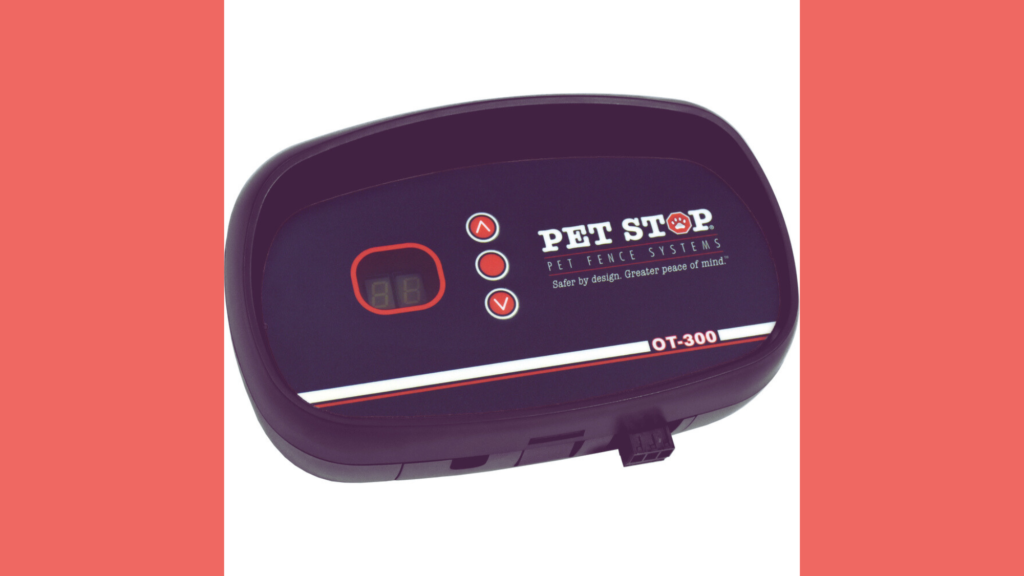
- Transmitter Unit:
- The core device that sends out a radio signal to create a circular boundary.
- Adjustable settings to customize the boundary size, typically covering up to ½ acre but expandable with additional transmitters.
- Must be placed indoors, preferably in a central location, away from large metal objects or electronic interference.
- Receiver Collar:
- Worn by the dog and detects the transmitter’s signal.
- Emits a warning beep, vibration, or static correction when the dog nears the boundary.
- Most models are waterproof and rechargeable, ensuring durability and longevity.
- Boundary Flags:
- Used as visual markers to help dogs recognize their new limits.
- Placed along the perimeter during the training phase and gradually removed as the dog learns the boundary.
- Rechargeable Battery:
- Powers the receiver collar, typically lasting 2-3 weeks per charge depending on usage.
- Some models use replaceable batteries, while others come with built-in rechargeable batteries.
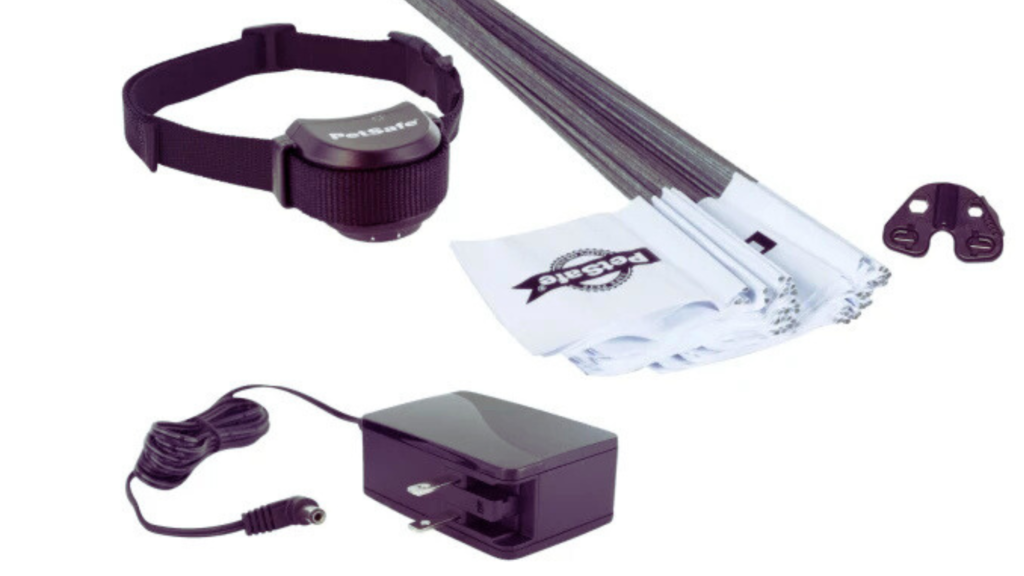
Training Your Dog to Use a Wireless Dog Fence
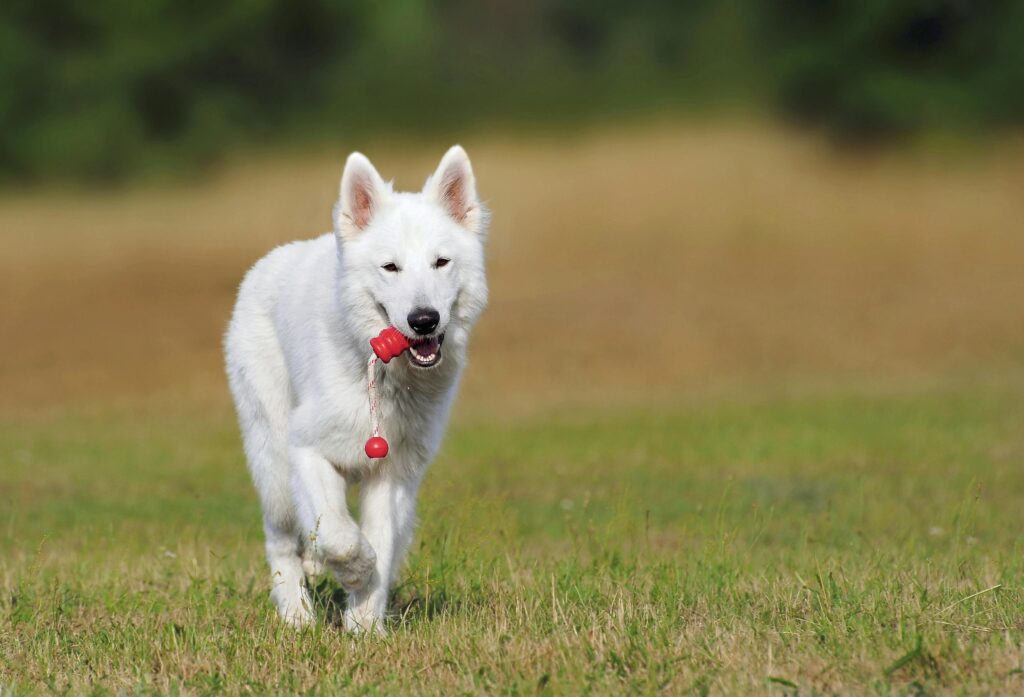
While a wireless dog fence provides an effective containment system, proper training is essential to ensure that your dog understands and respects the invisible boundary. Training should be conducted gradually and consistently to avoid confusion and anxiety. Most dogs learn the system within two to three weeks with the right approach.
1. Introducing Your Dog to the Boundary
Start by placing the boundary flags around the perimeter to create a visual marker for your dog. Walk your dog on a leash near the boundary line and allow them to explore while ensuring they stay within the safe zone. The key is to associate the boundary with a specific warning signal. For insights on whether Airedales are comfortable off-leash, explore this comprehensive article.
- Step 1: Set the collar to the tone-only mode or vibration mode to introduce your dog to the boundary without correction.
- Step 2: Lead your dog near the boundary and let them hear the warning beep or feel the vibration. Immediately guide them back to the safe area using verbal commands and treats.
- Step 3: Repeat this process several times a day for the first few days to reinforce the warning association.
2. Introducing Static Correction
Once your dog understands the warning signal, you can introduce the static correction to reinforce boundary respect.
- Step 1: Set the correction level to the lowest setting and observe your dog’s reaction when they cross the boundary.
- Step 2: If your dog does not respond, gradually increase the level until they show awareness (such as stopping or stepping back).
- Step 3: Reward your dog with praise and treats when they return to the safe zone. Positive reinforcement ensures they understand the correct behavior.
3. Off-Leash Training
After about one week of leash training, start allowing your dog off-leash within the boundary. Stay outside with them, and if they attempt to cross, use verbal commands to bring them back. If needed, the receiver collar will reinforce the boundary training through warning tones or corrections.
With continued practice, your dog will learn to avoid the perimeter even without wearing the collar, as they associate the area with training reinforcement. Discover the benefits of using a harness by reading this guide on Is a harness suitable for a Collie.
Common Issues and Troubleshooting Wireless Dog Fences
Even with proper setup and training, you might encounter some challenges with your wireless dog fence. Below are common issues and how to fix them:
1. Dog Ignores the Warning Signals

If your dog is not responding to the beep, vibration, or static correction, check the following:
- Check Contact Points: Ensure the receiver collar is making proper contact with your dog’s skin, especially for dogs with thick fur.
- Increase Correction Level: Some dogs may need a slightly higher level of correction before they acknowledge the boundary. Adjust the setting gradually.
- Reinforce Training: Go back to leash training and ensure your dog understands the warning signals before expecting them to obey the boundary off-leash.
2. Signal Interference or Inconsistent Boundary
If the boundary shifts or becomes inconsistent, it might be due to signal interference.
- Check the Transmitter Placement: Keep the transmitter away from metal objects, electronics, and thick walls that could disrupt the signal.
- Avoid Sloped Terrain: Wireless dog fences work best on flat ground. If you have a yard with hills or uneven terrain, consider a wired underground fence instead.
- Ensure Proper Power Supply: A low battery in the receiver collar or transmitter can cause inconsistent boundary signals. Regularly charge or replace batteries.
3. Dog is Afraid of the Fence
Some dogs may become fearful or hesitant after receiving a static correction. If this happens:
- Lower the Correction Level: Start with a gentler setting and focus more on positive reinforcement.
- Encourage Confidence: Use treats and praise to guide your dog away from the boundary rather than letting them associate the fence with punishment.
- Extend Training Duration: Some dogs take longer to adjust. Continue training at a slow and patient pace.
Maintenance and Longevity of Wireless Dog Fences
To keep your wireless dog fence system functioning effectively for years, follow these maintenance tips:
1. Regular Battery Checks
The receiver collar battery typically lasts 2-3 weeks per charge, depending on usage. Regularly check and recharge or replace the battery to prevent unexpected power loss. Some advanced models offer low battery indicators to notify you in advance.
2. Clean the Receiver Collar Weekly
Dirt, moisture, and debris can accumulate on the collar, affecting its functionality. Clean the contact points with a damp cloth to prevent irritation on your dog’s skin and maintain signal accuracy.
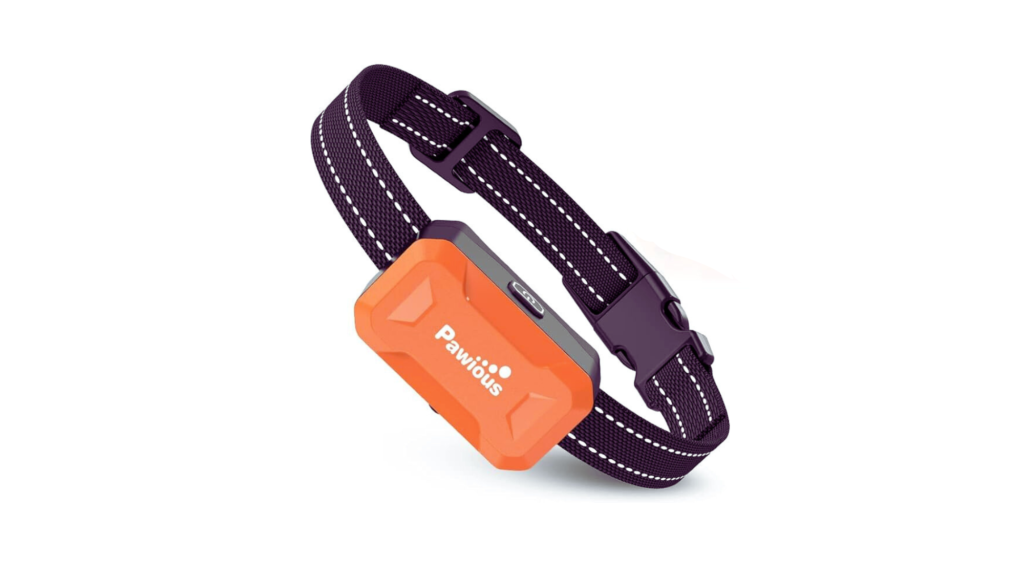
3. Monitor Weather Conditions
While most wireless dog fences are weatherproof, extreme conditions like heavy rain or snow can affect performance. If you live in an area with frequent storms, ensure the transmitter is placed indoors and consider getting a backup power supply in case of outages.
4. Store Properly When Not in Use
If you’re not using the fence for an extended period, store the transmitter and receiver collar in a cool, dry place to prevent damage. Disconnect and unplug the transmitter to extend its lifespan.
Is a Wireless Dog Fence the Right Choice for You?
A wireless dog fence Tractor Supply offers an excellent containment solution, but it’s not the perfect fit for every pet owner. Consider the following:
✅ A Wireless Dog Fence is Ideal If:
- You need a quick and easy containment solution without digging or wires.
- You have a flat, open yard without metal structures that could cause interference.
- You travel often and need a portable system for camping or temporary use.
- Your dog responds well to training and boundary reinforcement.
🚫 Consider Other Options If:
- You have a hilly or irregular yard, which can cause inconsistent signal boundaries.
- Your dog is stubborn or resistant to correction levels and requires additional reinforcement.
- You prefer a physical barrier, such as a traditional fence or wired underground system, for added security.
Why Choose a Wireless Dog Fence Tractor Supply?
1. Trusted Quality and Variety
Tractor Supply is known for high-quality pet products, offering a range of wireless dog fences that cater to different needs. Whether you have a small yard or an expansive property, you’ll find options that suit your specific requirements. Their selection includes top brands like Pet Safe, Sport DOG, and Extreme Dog Fence, ensuring that pet owners have access to the best containment solutions available.
2. Cost-Effective Alternative to Traditional Fencing
Installing a physical fence can be expensive and time-consuming, with costs varying based on material, size, and labor. Wireless dog fences provide a more affordable and convenient solution while achieving the same purpose—keeping your pet safely contained. Additionally, they require minimal maintenance compared to traditional fences, which may need repairs due to weather damage or wear and tear.
3. Easy Setup and Portability
Unlike in-ground wired fences, which require digging and complex installation, wireless fences are plug-and-play systems that can be set up in minutes. The transmitter unit is simply placed indoors, and the boundary settings are adjusted according to the desired area. Their portability makes them ideal for renters, frequent travelers, and outdoor enthusiasts who take their dogs on camping trips or vacations.
4. Customizable Boundaries and Multi-Dog Capability
Most wireless dog fences allow users to adjust the boundary size to fit their yard and can accommodate multiple dogs by purchasing additional receiver collars. This flexibility ensures that households with multiple pets can train all their dogs to respect the invisible boundary using a single containment system.
5. Safe and Humane Training Features
Wireless dog fences are designed with adjustable correction levels, allowing pet owners to customize the training experience based on their dog’s temperament and sensitivity. Most systems offer tone-only and vibration modes as initial warnings before applying static correction, ensuring that dogs are guided humanely and effectively.
How Does a Wireless Dog Fence Work?
Wireless dog fences operate using radio frequency signals rather than physical barriers. When a dog wearing the receiver collar approaches the set boundary, the collar reacts in the following stages:
- Warning Stage: The collar emits an audible beep or vibration to alert the dog that they are nearing the boundary.
- Correction Stage: If the dog continues moving toward the boundary, the collar delivers a mild static correction to discourage further movement.
- Reinforcement Stage: If the dog ignores the warning and crosses the boundary, the correction level may increase temporarily until they return to the safe zone.
Over time, dogs learn to associate the warning signals with boundary limits, allowing them to roam freely within the designated area without needing repeated corrections.
Choosing the Right Wireless Dog Fence Tractor Supply
When selecting a wireless dog fence, consider the following factors:
1. Yard Size and Boundary Coverage
Different wireless fences offer varying coverage areas. Standard models cover ½ acre, while advanced systems can be expanded up to 5 acres with additional transmitters. Ensure the fence you choose can cover the required space effectively.
2. Number of Dogs
Some systems support multiple dogs using additional receiver collars. If you have more than one dog, choose a fence system that allows for multi-dog training.
3. Correction Levels and Training Modes
Dogs have different sensitivities. Choose a fence with adjustable correction levels so you can tailor the training experience to your dog’s temperament.
4. Portability Needs
If you travel frequently, select a lightweight and portable system like the Pet Safe Stay & Play Wireless Fence, which can be set up anywhere within minutes.
5. Battery Life and Waterproofing
Ensure the receiver collar has a long battery life (typically 2-3 weeks per charge) and is waterproof to withstand outdoor conditions.
Final Words
A wireless dog fence Tractor Supply is a safe, convenient, and cost-effective way to keep your dog contained while allowing them the freedom to explore outdoors. With easy installation, adjustable settings, and humane correction features, these fences provide pet owners with peace of mind, knowing their furry friends are secure.
By choosing the right wireless dog fence based on your yard size, pet’s temperament, and lifestyle needs, you can effectively train your dog to stay within designated boundaries without the need for unsightly physical barriers.
With proper setup, consistent training, and regular maintenance, your wireless dog fence will be a valuable tool in ensuring your pet’s safety for years to come. Discover the Recommended collar size for a French Bulldog puppy to ensure both safety and comfort during their growing stages


